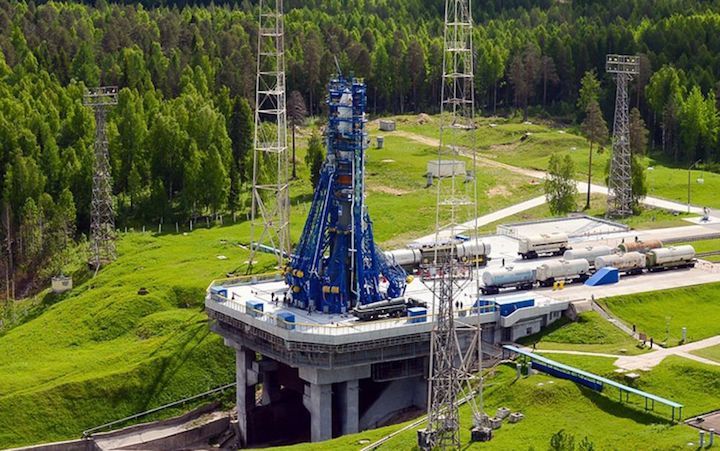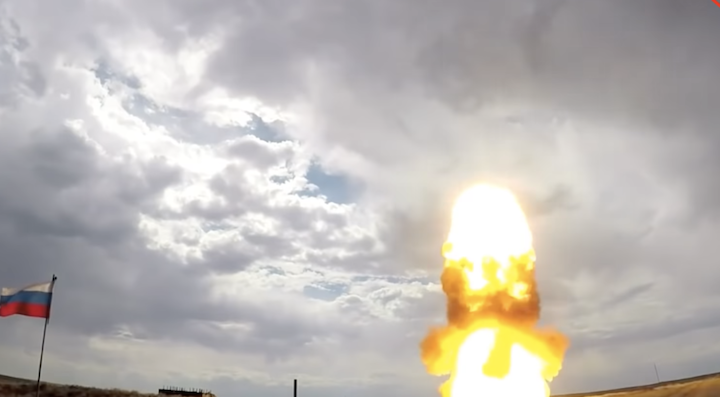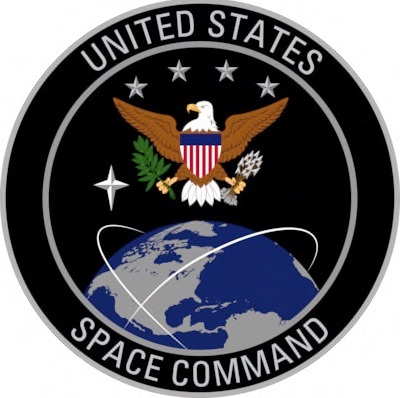18.12.2020
"Russia has made space a warfighting domain," Space Command says.

Russia has launched a new anti-satellite missile test in its latest push to weaponize space, U.S. Space Command officials said Wednesday (Dec. 16).
In its third anti-satellite test this year, Russia launched a direct-ascent anti-satellite (DA-ASAT) missile, which can destroy small satellites in low Earth orbit. When a satellite is struck by a DA-ASAT missile, the field of debris left behindcould pose a threat to other satellites "and irrevocably pollute the space domain," the U.S. Space Command (USSC) said in a statement.
"Russia publicly claims it is working to prevent the transformation of outer space into a battlefield, yet at the same time Moscow continues to weaponize space by developing and fielding on-orbit and ground-based capabilities that seek to exploit U.S. reliance on space-based systems," U.S. Army Gen. James Dickinson, commander of the USSC, said in the statement. "Russia's persistent testing of these systems demonstrates threats to U.S. and allied space systems are rapidly advancing."
Russia has now demonstrated two different types of space weapons: DA-ASAT missiles, which launch from the ground, and a space-based system the USSC refers to as a "co-orbital ASAT." Russia's previous anti-satellite test on July 15 was the latter type of mission, during which Russia's Cosmos 2543 satellite "injected a new object into orbit" and "conducted a non-destructive test" of an anti-satellite weapon, USSC officials said.
The last time Russia launched a DA-ASAT missile like the one that just happened was on April 15. This came about two months after the U.S. Space Force began tracking two Russian satellites that were stalking a U.S. spy satellite in orbit — a behavior that Space Force commander Gen. John "Jay" Raymond described as "unusual and disturbing" at the time. One of those satellites was Cosmos 2543, the same satellite used for the July 15 co-orbital test.
"Russia has made space a warfighting domain by testing space-based and ground-based weapons intended to target and destroy satellites," Dickinson said. "This fact is inconsistent with Moscow's public claims that Russia seeks to prevent conflict in space. Space is critical to all nations. It is a shared interest to create the conditions for a safe, stable, and operationally sustainable space environment."
Quelle: SC
+++
Space Force official: Russian missile tests expose vulnerability of low-orbiting satellites

Updated Dec. 17 with State Department statement
WASHINGTON — Russia on Dec. 15 conducted a ballistic missile test that U.S. Space Command condemned as a threat to satellites in orbit.
“The nation must do something about this,” said Lt. Gen. Nina Armagno, director of staff of the Office of the Chief of Space Operations of the U.S. Space Force.
Speaking Dec. 16 at a Washington Space Business Roundtable virtual event, Armagno said the recent Russian missile test shows how vulnerable satellites are, and validates the decision to establish a military space service focused on defending U.S. space systems.
“Our mission is to protect the interests of the U.S. in space and deter aggression,” said Armagno.
Russia issued a notice to airmen that it would be launching a ballistic missile Dec. 15 presumed to be a Nudol, which can be employed as a defensive interceptor weapon but also can be used to take down satellites in orbits anywhere from 100 miles to 1,200 miles above the Earth’s surface. Many of the satellites currently in low-Earth orbits are commercial and government spacecraft used for intelligence, surveillance, reconnaissance and communications.
“Russia’s persistent testing of these systems demonstrates threats to U.S. and allied space systems are rapidly advancing,” Gen. James Dickinson, commander of U.S. Space Command, said Dec. 16 in a statement. “We stand ready and committed to deter aggression and defend our nation and our allies from hostile acts in space.”
No satellite was reportedly targeted in Russia’s latest test. U.S. Space Command’s assertion that it was an anti-satellite test comes from the assumption that Nudol can be used to target satellites, but these launches also are conducted as missile defense tests, noted Brian Weeden, of the Secure World Foundation. “It’s unlikely that there was an actual target in space,” Weeden said of the latest test.
Weapons like the Nudol are known as “direct ascent” anti-satellite systems and have been tested by Russia multiple times. “If this weapon is tested on an actual satellite or used operationally, it will cause a large debris field that could endanger commercial satellites and irrevocably pollute the space domain,” Dickinson said.
The development and deployment of direct-ascent anti-satellite systems is not prohibited by any arms control agreements, noted Timothy Wright, military analyst at the International Institute for Strategic Studies.
A State Department spokesperson said Russia’s action is the “latest in a disturbing pattern of ongoing irresponsible space activities.”
Anti-satellite missile testing and “provocative on-orbit behavior further demonstrates the urgent need to develop and implement norms of responsible behavior in outer space,” the spokesman said in a statement to SpaceNews. “The Department of State will continue to work with all responsible spacefaring nations to develop such norms and to confront threats to U.S., allied, and partner interests in outer space.”
Quelle: SN
----
Update: 22.12.2020
.
Russia tests direct-ascent anti-satellite missile

Russia has conducted a test of a direct-ascent anti-satellite (DA-ASAT) missile.
“Russia publicly claims it is working to prevent the transformation of outer space into a battlefield, yet at the same time Moscow continues to weaponize space by developing and fielding on-orbit and ground-based capabilities that seek to exploit U.S. reliance on space-based systems,” said U.S. Army Gen. James Dickinson, U.S. Space Command commander.
“Russia’s persistent testing of these systems demonstrates threats to U.S. and allied space systems are rapidly advancing. The establishment of U.S. Space Command as the nation’s unified combatant command for space and U.S. Space Force as the primary branch of the U.S. Armed Forces that presents space combat and combat support capabilities to U.S. Space Command could not have been timelier. We stand ready and committed to deter aggression and defend our Nation and our allies from hostile acts in space.”
The United States is concerned by Russia’s continued development and deployment of several types of ground-based and space-based ASAT weapons. These actions are contrary to Russia’s diplomatic and public stance against the weaponization of space. Specifically, Russia has demonstrated two completely different types of space weapons.
The first type of kinetic weapon is a DA-ASAT system capable of destroying satellites in low Earth orbit, which they have tested multiple times. If this weapon is tested on an actual satellite or used operationally, it will cause a large debris field that could endanger commercial satellites and irrevocably pollute the space domain.
The second type is a co-orbital ASAT, a space-based weapon system, which demonstrated an on-orbit kinetic weapon in 2017 and again in 2020. Furthermore, in March 2018, President Putin announced the development of a ground-based laser system for use by the Russian Space Forces, which the Russian military acknowledged as a “combat laser system.” This pattern of behavior would be considered potentially threatening in any other domain.
“Russia has made space a warfighting domain by testing space-based and ground-based weapons intended to target and destroy satellites," Dickinson added. "This fact is inconsistent with Moscow’s public claims that Russia seeks to prevent conflict in space. Space is critical to all nations. It is a shared interest to create the conditions for a safe, stable, and operationally sustainable space environment. The demands on the space systems continue in this time of crisis where global logistics, transportation, and communications are key to defeating the COVID-19 pandemic.”
Quelle: U.S. Space Command

